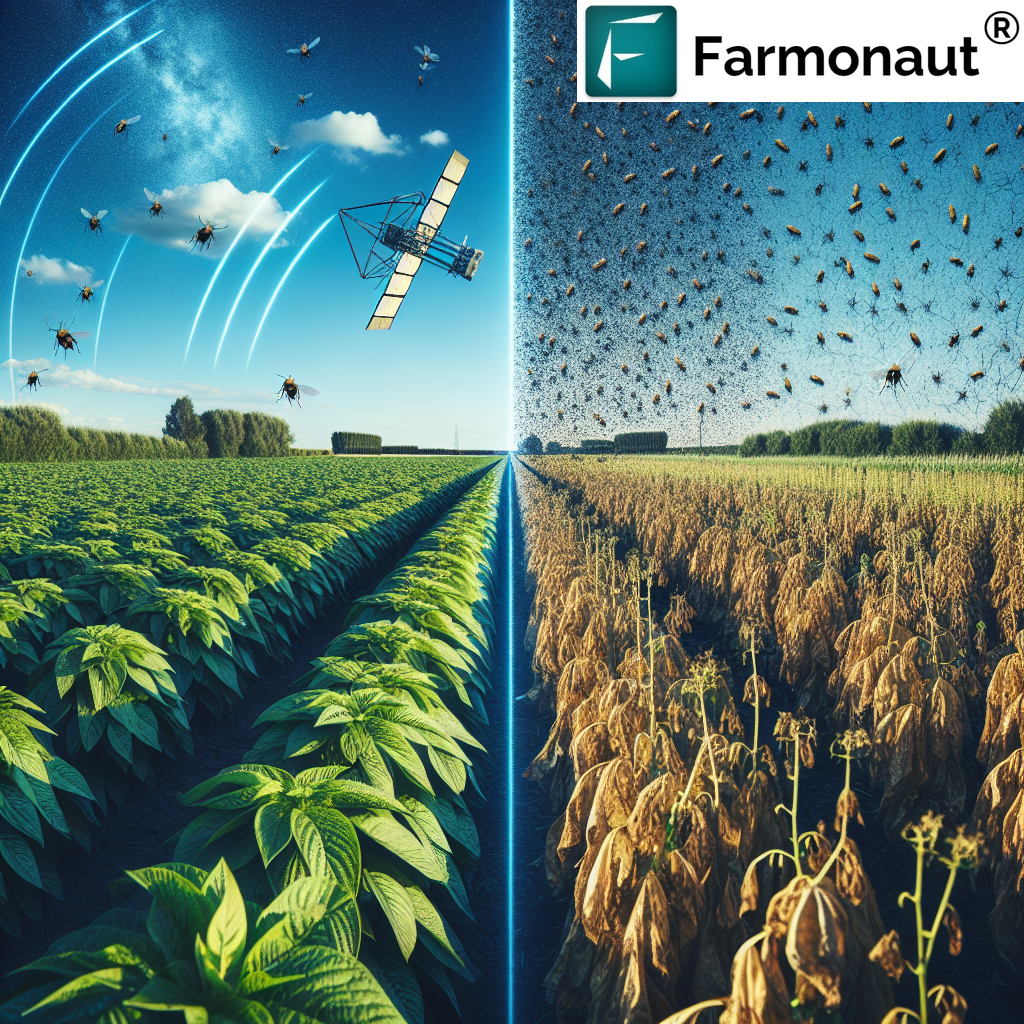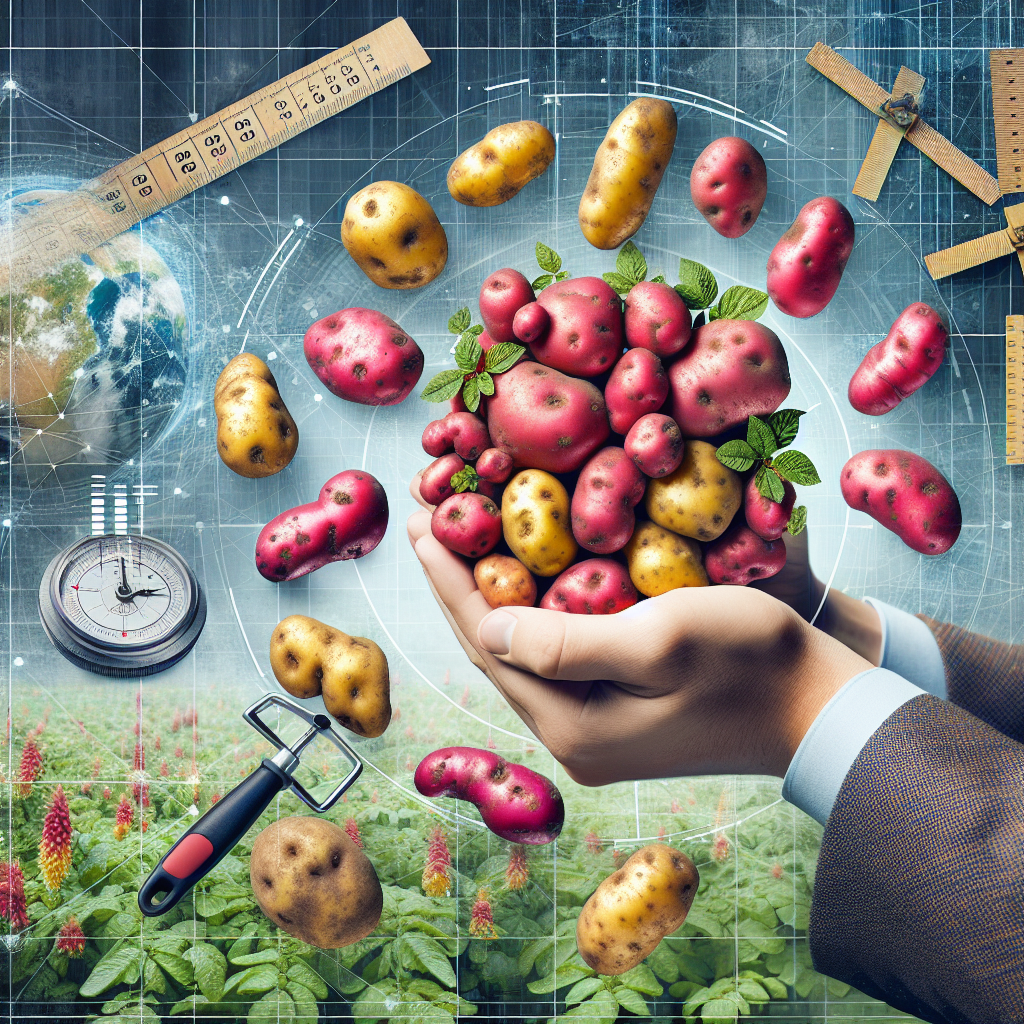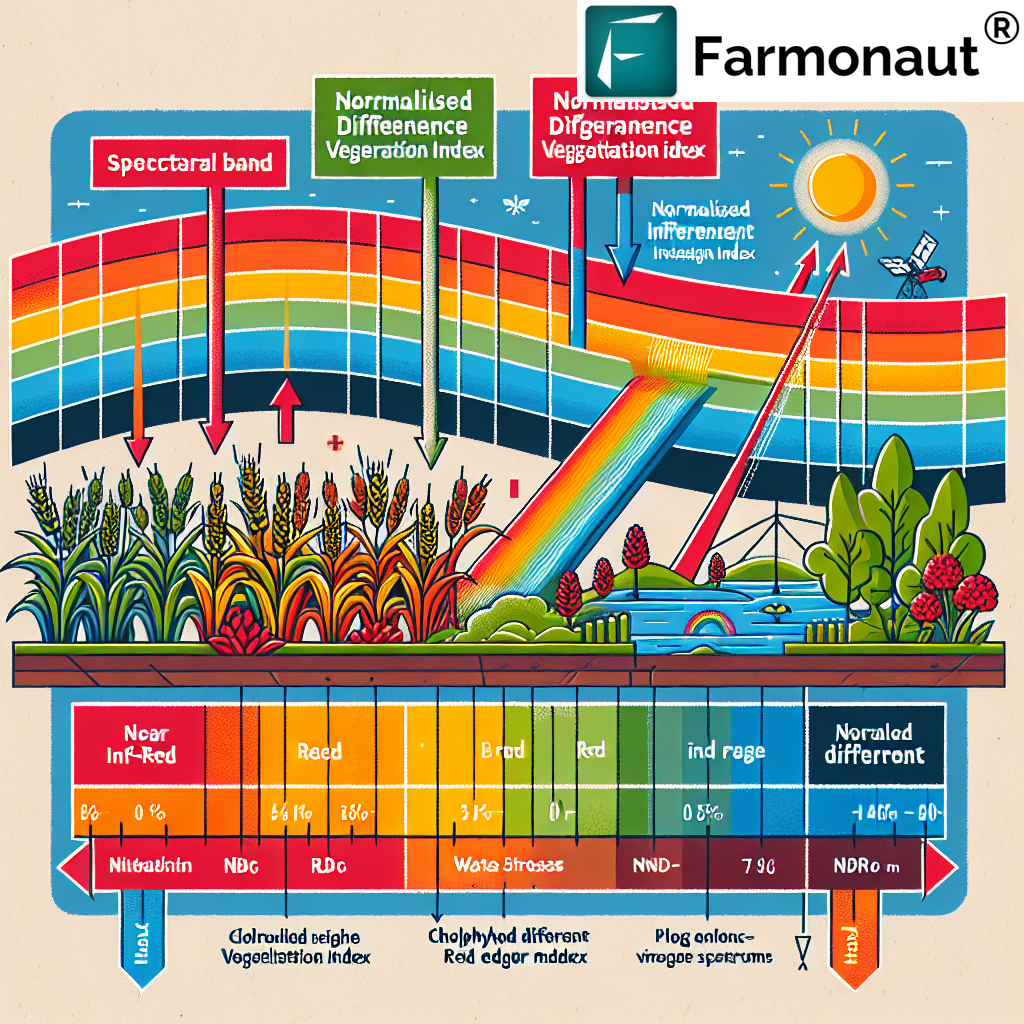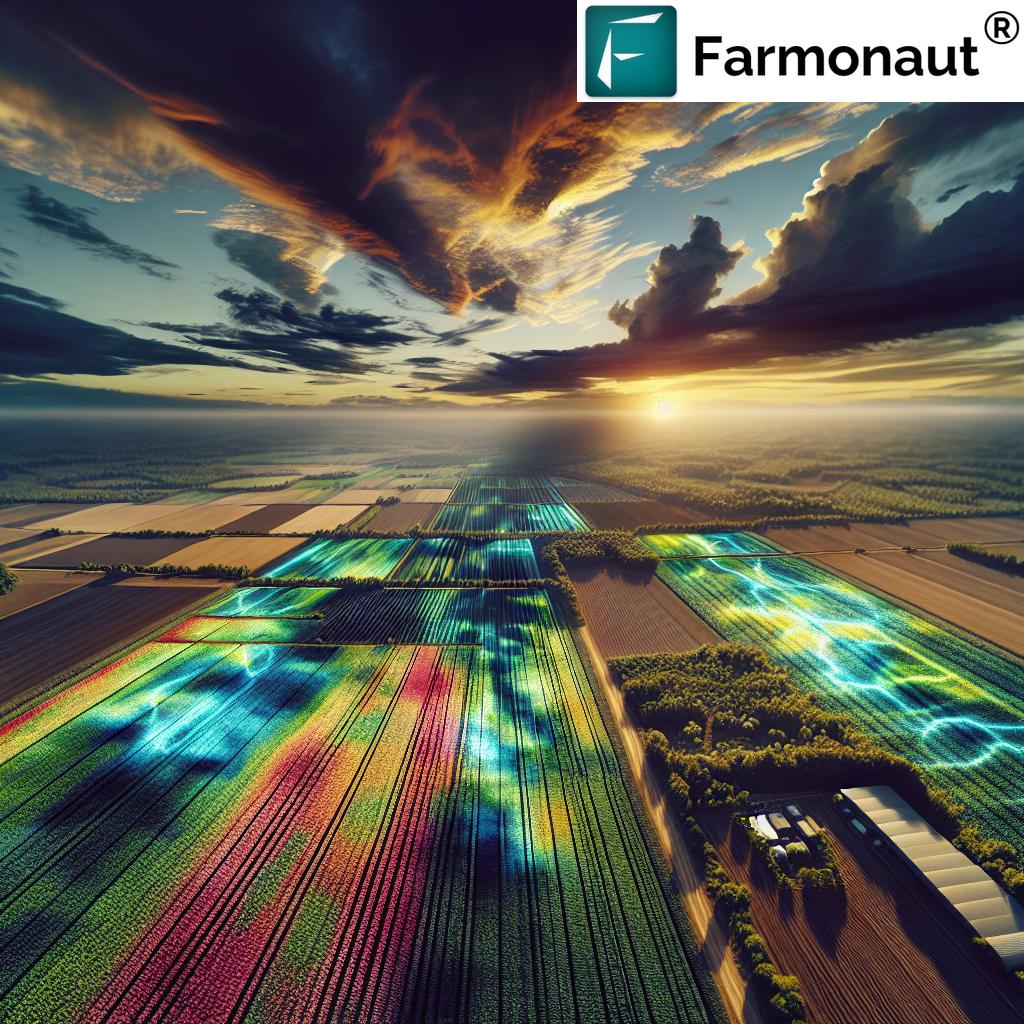20-20-20 Fertilizer, NPK & Liquid 2026: Advanced Fertilization for Higher Yields, Soil Health, and Precision Agriculture
“A balanced 20-20-20 NPK fertilizer delivers equal parts of nitrogen, phosphorus, and potassium: 20% each by weight.”
Access real-time crop monitoring, soil health reports, traceability, and more on Farmonaut. Use our large scale farm management solution for data-driven farming and climate resilience planning.
Introduction: 2026 and the Fertilizer Revolution
In modern agriculture, the landscape of fertilization continues to evolve at an unprecedented pace. As 2026 approaches, the power of balanced 20 20 fertilizer, 20 20 20 fertilizer, and high-precision liquid NPK fertilizer 20 20 20 is ever more evident. These formulas—consisting of nitrogen (N), phosphorus (as P₂O₅), and potassium (as K₂O) in carefully calibrated ratios—remain at the core of optimizing crop yield, improving soil health, and pushing farming further towards true environmental sustainability.
Farmers are now empowered to make data-driven decisions about fertilizer usage, thanks to advancements in satellite imagery, AI, and farm management systems. Solutions like those offered on the Farmonaut platform enable real-time field scouting, soil monitoring, resource tracking, and blockchain traceability—integrating the best modern technologies with proven nutrient science for sustainable agricultural growth and stewardship.
Understanding 20-20-20 and NPK Formulations
The term “20-20-20 fertilizer” refers to a balanced NPK fertilizer where the numbers indicate the percentage by weight of nitrogen (N), phosphorus pentoxide (P₂O₅), and potassium oxide (K₂O) respectively. Thus, a 20 20 20 fertilizer contains 20% nitrogen, 20% phosphorus pentoxide, and 20% potassium oxide. Such a blend is engineered to meet the essential macro-nutrient demands that drive growth and production in a wide array of crops in modern farming.
- Nitrogen (N): Promotes vigorous vegetative growth, chlorophyll production, and leafy biomass.
- Phosphorus (P₂O₅): Supports root development, energy transfer within plants, and is critical during reproductive and flowering stages.
- Potassium (K₂O): Enhances disease resistance, water regulation, fruit and tuber quality, and improves overall plant health.
Other NPK formulations like 10-20-20 fertilizer or 20-10-20 fertilizer tailor the nutrient blend to different stages of the crop lifecycle, underlying soil conditions, and targeted yield outcomes. Understanding the precise ratios and the rationale behind them enables farmers to optimize nutrient plans with confidence.
How Do NPK Fertilizer 20-20-20 and Other Balanced Fertilizers Work?
The Science of Proportion: Numbers, Percentages, and Growth Drivers
The numbers on any NPK bag indicate the exact percentage by weight of N, P (as P₂O₅), and K (as K₂O) respectively. For instance:
- 20-20-20 Fertilizer = 20% N, 20% P₂O₅, 20% K₂O
- 10-20-20 Fertilizer = 10% N, 20% P₂O₅, 20% K₂O
- 20-10-20 Fertilizer = 20% N, 10% P₂O₅, 20% K₂O
This means—for every 100kg of 20 20 20 fertilizer, 20kg is nitrogen, 20kg is phosphorus (as P₂O₅), and 20kg is potassium (as K₂O). The balance consists of fillers, conditioners, or additional micronutrients in some modern formulations.
With 20 20 20 fertilizer, we achieve uniform nutrition that helps crops access all three essential nutrients in the right proportions, minimizing deficiencies and excesses that can harm plant health, cause pollution, or reduce yield.
- Nitrogen: Drives leafy and vegetative growth. Must be carefully managed as over-application can cause water pollution or weak stems.
- Phosphorus: Vital for energy transfer and establishing strong roots. Essential during early season and reproductive stages.
- Potassium: Regulates water movement, enables stress resistance, improves quality of fruit, tubers, and disease resistance.
Balanced NPK fertilizer 20 20 20 remains the go-to for row crops, vegetables, horticulture, and greenhouse cultivation. Crops at the early growth or vegetative stage often benefit most from balanced or nitrogen-rich blends (such as 20 10 20 fertilizer), whereas flowering, fruiting, or tuber formation benefit from formulas like 10 20 20 fertilizer (with higher phosphorus/potassium).
“Precision liquid fertilizers can increase nutrient uptake efficiency by up to 25% compared to traditional granular forms.”
Application Methods for 20-20-20 Fertilizer and Precision Use
Sophisticated farming practices in 2026 use a range of application methods. Granular 20 20 20 fertilizer is commonly applied via broadcast, banding, or side-dressing. However, as precision agriculture and advanced monitoring become mainstream, growers are increasingly turning to variable rate technology (VRT) and fertigation via irrigation systems.
- Broadcasting: Spreading fertilizer evenly over a large area. Best for uniform nutrition but less targeted.
- Band application: Placing fertilizer in narrow bands near plant roots—improves uptake and reduces losses.
- Side dressing: Fertilizer added alongside growing plants, often during the growing season for more efficient feeding.
- Fertigation: Application of liquid fertilizers through irrigation systems—highly compatible with liquid 20 20 20 fertilizer for precise and timely nutrition.
- Foliar feeding: Nutrients sprayed directly on crop foliage for rapid absorption—especially effective with liquid NPK fertilizers.
With the emergence of satellite-based crop monitoring and AI-powered prescription platforms—like those we offer at Farmonaut—farmers can receive feedback-driven fertilization plans, ensuring just the right amount of 20 20 20 fertilizer (or other variants) reaches the root zones where it matters most.
- Variable Rate Technology (VRT): Using geospatial data, sensors, and field imagery to calibrate fertilizer dose per zone—reducing wastage, lowering costs, and minimizing environmental risks linked to nutrient runoff.
Liquid 20-20-20 Fertilizer: Technology for the Modern Farmer
In recent years—and particularly in 2025 and beyond—liquid 20-20-20 fertilizer and liquid NPK fertilizer 20 20 20 forms have surged in popularity due to their compatibility with precision systems and sustainable practices. Liquid fertilizers are especially beneficial for:
- Fertigation: Integrating fertilizer into irrigation water for uniform, timely, and targeted application.
- Foliar Feeding: Providing fast-acting nutrients directly through leaves, correcting deficiencies in-season.
- Hydroponics and Soilless Cultivation: Used in precision-controlled agriculture for exact nutrient delivery (20 20 20 liquid fertilizer is widely used here).
- Controlled-environment Agriculture: Greenhouses and vertical farms rely on liquid formulations for consistency and precision.
Advantages: Liquid NPK fertilizers enable more uniform distribution of nutrients, dissolve rapidly, are easy to handle, and can be blended with micronutrients or biostimulants for tailored fertilization. They significantly reduce labor costs, dust risks, and are aligned with sustainable and safe farming practices.
Liquid 20-20-20 or higher-grade NPK liquids are adaptable to digital management, IoT-connected dispensing systems, and remote-sensing-driven fertigation plans. This empowers data-led yield optimization and strengthens environmental stewardship.
Enhance food safety and market trust with Farmonaut’s blockchain-backed Traceability solution. From fertilizer usage to harvest, trace every input and process—and access sustainable certification for your crops.
Comparison Table: 20-20-20, 10-20-20, 20-10-20, Other NPK & Liquid Fertilizers
| Fertilizer Type | NPK Ratio | Main Components | Application Method | Estimated Yield Improvement (%) | Soil Health Impact | Sustainability Score (1-5) | Advanced Technology Compatibility |
|---|---|---|---|---|---|---|---|
| 20-20-20 Granular Fertilizer | 20-20-20 | N, P₂O₅, K₂O | Broadcast, Band, Side-dress | 10-15% | Balanced, Non-acidifying | 4 | Compatible with VRT, satellite monitoring |
| 10-20-20 Granular Fertilizer | 10-20-20 | Lower N, Higher P & K | Pre-plant, Side-dress | 8-12% | Improves rooting/tuber crops; less vegetative strength | 4 | Maps for root/tuber crop cycles |
| 20-10-20 Granular Fertilizer | 20-10-20 | Higher N | Early-season, Broadcast | 12-16% | Supports fast vegetative growth | 4 | AI-guided for high foliage need crops |
| 15-15-15 NPK Fertilizer | 15-15-15 | Even NPK, micronutrient blends optional | General purpose | 10-14% | Low acidification, supports diverse crops | 3.5 | Basemap for non-specialty crops |
| 20-20-20 Liquid Fertilizer | 20-20-20 | High-purity N, P₂O₅, K₂O (dissolved) | Fertigation, Foliar, Hydroponics | 13-18% | Promotes rapid uptake, less residue | 5 | Fully VRT, IoT & satellite enabled |
| Other Liquid NPK Blends | Varies (e.g., 17-8-25) | Custom ratios + additives | Fertigation, Foliar | 10-20% | Precision tailored, minimal leaching | 5 | 100% digital integration, automated |
| 12-32-16 or High-P Phased Releases | 12-32-16 | Emphasis on P for starter crops | Pre-plant, Band | 7-10% | Jumpstarts root growth, seedling vigor | 4 | Pre-mapped to soil test analytics |
*All values are estimates; actual outcomes depend on soil health, environmental conditions, technology adoption, and crop management practices.
Soil Health, Crop Yield, and Advanced Practices in 2026
For modern agriculture, the ultimate goals are optimizing yield quantity and improving crop quality—without compromising soil health or accelerating environmental decline. Here’s how 20-20-20 and related NPK fertilization supports these ambitions:
- Yield Improvement: Balanced NPK formulas provide essential nutrients in right proportions, promoting overall plant vigor, minimizing deficiencies, and enhancing production.
- Soil Health: Uniform 20 20 20 fertilizer application ensures nutrients do not accumulate excessively or deplete, supporting long term fertility. Liquid npk fertilizer 20 20 20 is particularly gentle on soil structure, allowing for more sustainable cycles.
- Quality: With precise fertilization plans and advanced blends, fruit and tuber crops develop improved flavor, color, and storability—a huge advantage for growers and consumers.
- Sustainable Practices: Innovative application technologies greatly reduce environmental risks (like runoff, leaching, or emissions), aligning with global stewardship and climate goals.
“Farmers who use precision tools and balanced fertilization not only improve current yields, but also safeguard their soil for the future, ensuring their land remains productive for generations to come.”
Monitor, manage, and verify carbon footprinting in agriculture with Farmonaut for a transparent, sustainable farming operation that meets future regulatory standards.
Leveraging Precision Technologies and Data-Driven Platforms
The impact of fertilization in 2026 is supercharged by digital innovation. Farmonaut provides AI-powered, satellite-driven solutions for monitoring soil health, mapping deficiencies (like N, P, or K shortages), and real-time advisory for crop management. With real-time dashboards and blockchain traceability, we empower farmers and agronomists to:
- Precisely identify soil zones needing additional or less fertilizer
- Track nutrient application effectiveness at every growth stage
- Adopt resource-efficient fertilization plans with automated VRT control
- Ensure regulatory compliance (carbon accounting, traceability, insurance verification, etc.)
Advanced data and resource management tools on Farmonaut can reduce wastage, enhance sustainability scores, and help optimize input costs.
For fleet tracking, see our fleet management solutions—tailored to agricultural and mixed rural operations.
Choosing the Right Fertilizer for Your Crop and Soil
Crop Needs, Soil Tests, and Smart Decisions
How do you choose between 20 20 20 fertilizer, 10 20 20 fertilizer, 20 10 20 fertilizer, or advanced liquid fertilizer options?
-
Growth Stage:
- Early vegetative stages: favor higher nitrogen blends like 20 20 20 fertilizer or 20 10 20 fertilizer for leaf and stem hunger.
- Root, tuber, flowering, fruiting: use higher phosphorus/potassium ratios like 10 20 20 fertilizer.
-
Crop Type:
- Cereal/row crops: 20 20 20 fertilizer suits most universal needs.
- Tuber (potato, yam): 10 20 20 fertilizer strengthens root and reproductive tissue.
- Leafy vegetables: 20 10 20 fertilizer supports lush top growth.
- Soil Testing: Before any fertilization, conduct rigorous soil analysis (including digital zone mapping). This reveals true deficiencies, overlaps, and supports judicious fertilizer application.
- Technology Adoption: For maximum efficiency, synchronize application with digital monitoring, VRT, and advisory tools provided by platforms like Farmonaut.
Remember: Over-application of nitrogen can cause leaching and pollution, while under-applying phosphorus/potassium may stunt growth or depress yield. Precision and balance are the foundations of sustainable fertilizer management.
Using Farmonaut’s crop loan and insurance verification tools, you can prove responsible input use, lower risk, and access better financing options for your farm—fully backed by satellite records.
Sustainability Scoring: NPK Fertilizers in Modern Agriculture
As 2026 and beyond brings new environmental regulations and stakeholder scrutiny, sustainability scoring is essential. Here’s what to look for in choosing NPK or liquid fertilizer options:
- Carbon emissions per ton applied (farmers can track using Farmonaut’s carbon footprint tool)
- Nutrient leaching/runoff potential—liquids (via precision) can reduce environmental impact by up to 25%
- Compatibility with organic amendments and regenerative agriculture—some NPK blends mix well with compost, biochar, or green manure
- Traceability & compliance: Digital record-keeping (traceability solutions) is vital for certifications and sustainable supply chain claims
- Socioeconomic fairness: Ensuring farmers of all scales can access the technology—Farmonaut solutions are affordable, scalable, and accessible globally
The Future of Fertilization: Beyond 2026
Trends, Integrations, and New Roles for Classic NPK Blends
The horizon for plant nutrition is more innovative and sustainable than ever. Research in and past 2026 is transforming fertilization norms. Balanced npk fertilizer 20 20 20 and its liquid upgrades remain highly relevant, but with increasingly precise release profiles, micronutrient additions, soil-microbe partnerships, and integration into whole-farm management systems.
- Micronutrient Integration: Advanced fertilizers now incorporate zinc, boron, sulphur, etc., preventing ‘hidden hunger’ and increasing crop resilience.
- Bio-Based & Smart Coatings: Organic matter and ‘controlled-release’ polymers reduce runoff and emissions.
- Real-Time Feedback Loops: Combining drone, satellite, and IoT soil sensors for continuous adjustment to nutrient applications—enabled by platforms like Farmonaut’s AI advisory system.
- Blockchain Traceability: Consumers and authorities demand fully transparent farm-to-market records—ensure compliance with traceability tools.
- Forest, Mining, and Land Restoration: Precision fertilizer management is not just for arable land—NDVI and soil monitoring guide reclamation projects as well.
Balanced NPK fertilizers like 20 20 20—as well as 10 20 20, 20 10 20, and liquid formats—will remain the core nutritional drivers across crops, continents, and climates. When applied with precision, they sustain both yield and the planet.
API Integration for Developers & Enterprise Solutions
If you’re building agtech platforms, custom input tracking, or farm analytics solutions, access the Farmonaut API for robust satellite data, soil diagnostics, and plant health insights. Visit our API portal and developer documentation for detailed guides, endpoints, and integration tips. Power next-level precision agriculture with real-time NPK, weather, and zone stats at scale.
FAQs on 20-20-20, NPK Fertilizers, and Liquid Application
What does “20-20-20 fertilizer” mean exactly?
It means the fertilizer contains 20% nitrogen, 20% phosphorus (as P₂O₅), and 20% potassium (as K₂O) by weight. This balanced ratio supports overall plant health, covering all essential macro-nutrient requirements typically needed in most crop systems.
When should I use 20 20 20 fertilizer versus 10 20 20 or 20 10 20?
20 20 20 fertilizer is ideal for periods of rapid vegetative growth, general-purpose nutrition, and for balanced soil environments. 10 20 20 fertilizer is better suited for flowering, fruiting, tuber, and root development stages. 20 10 20 fertilizer delivers more nitrogen for leafy or early-growth demands.
Are liquid 20 20 20 fertilizers more effective than granular?
Liquid 20 20 20 fertilizer can increase nutrient uptake efficiency by up to 25%, especially when used in fertigation or foliar applications. Liquids also allow for superior precision and integration with digital or variable-rate systems.
Can I use Farmonaut to determine the right fertilizer application?
Yes! Farmonaut’s monitoring tools and AI-based advisory analyze satellite and field data to recommend fertilizer type, zone-specific dosages, and application timing for maximum efficiency and minimum environmental risk.
Do NPK fertilizers harm soil or water?
When applied according to modern precision agriculture guidelines and soil tests, npk fertilizer 20 20 20 blends do not harm soil or water. Overuse or neglect of zone-based recommendations, however, can cause nutrient leaching, runoff, or imbalances.
Get Started with Farmonaut Today
Ready to advance your crop yield, safeguard soil, and adopt precision fertilization for the 2026 season—and beyond?
- Monitor your fields, track input effectiveness, and build a verified record of sustainable practices with Farmonaut.
- Access real-time AI advice, satellite soil and crop health mapping, and blockchain traceability for market access.
- Integrate our API or developer docs into your solution stack for scalable agronomic intelligence.
Unlock the power of advanced crop and plantation advisory for your field, forest restoration, or large-scale development project.
In conclusion, 20 20 fertilizer, 20 20 20 fertilizer, and advanced liquid NPK fertilizer 20 20 20 blends continue to play a critical role in modern farming, horticulture, and sustainable land management in 2026 and beyond. By selecting the right ratio for your crop type, stage, and soil health—and pairing it with innovative technologies—farmers and agronomists can achieve higher yields, healthier soils, and a truly balanced environmental footprint.
We at Farmonaut are committed to supporting you every step of the way with tools that connect classic plant science and cutting-edge digital analytics. Do more with every bag—every drop—of fertilizer you use. Join the new era of precision, sustainability, and stewardship in agriculture.













